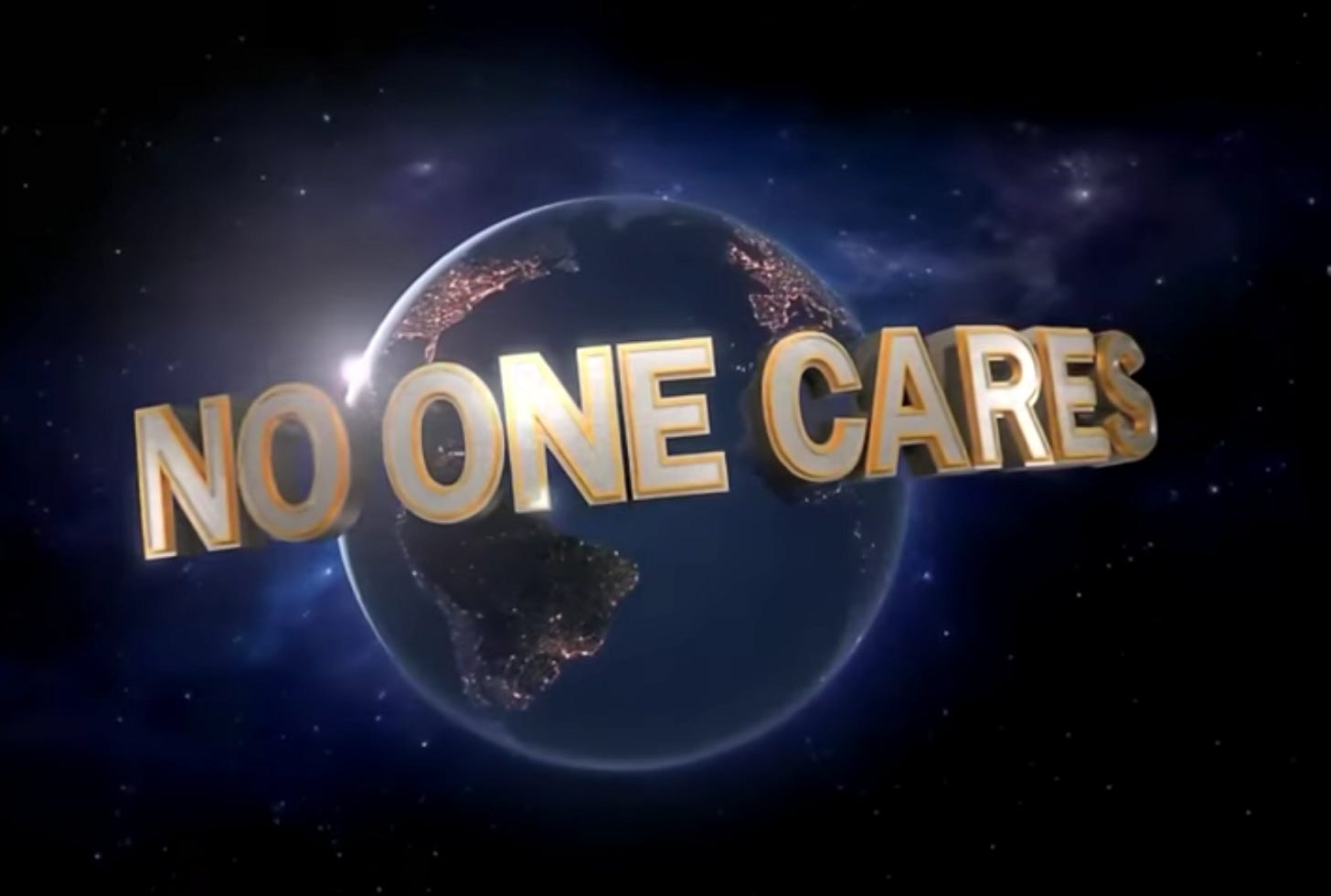TCC #47: How the issue-attention cycle undermines climate communications
Can we care about everything, all the time?
Climate communicators have a tough gig. They’re basically tasked with continually talking about a problem, whether people feel like caring about it or not. Even though the vast majority of people believe climate change is a serious threat, they can’t care about it all of the time and with all of their being.
I write about climate change every day, and I still can’t care about it all the time.
In 1972, American economist Anthony Downs described the environmental movement as suffering from the issue-attention cycle. He proposed that public interest could only focus intensely on any one issue for a limited time. Instead, we follow a predictable cycle where a particular issue sparks temporary attention in the matter at hand, before waning until the next issue. For example, school shootings temporarily increase interest in gun control. Wars increase fears of nuclear disaster. Hurricanes revive talk of climate change.
It seems that, as a group, we can’t sustain intense interest for very long. Once the shock factor wears off, life goes on. The problem is probably even worse now, when microwave culture has given us three-second goldfish brains always looking for our next dose of online outrage.
This happens with a lot of things. How much did you care about governments investing in pandemic preparedness in 2019 compared to 2020? How much do you care about the war in Ukraine now compared to in February of 2022?
Downs described five distinct stages of the issue attention cycle. It seems the climate movement has reached Stage 5: the Post-Problem Stage. In this stage, says Downs, “an issue that has been replaced at the center of public concern moves into a prolonged limbo—a twilight realm of lesser attention or spasmodic recurrences of interest.”
The good thing about being in the post-problem stage is that the initial attention often leads to the creation of policies and organizations that continue doing the difficult work to solve the problem. As far as climate change is concerned, there are certainly a lot of people now dedicated to solutions.
The bad thing about being in the post-problem stage is that the general public is pretty pooped from hearing about this problem for so long. They’re depressed, because it never seems to get any better.
The question for those working in corporate sustainability communications, developing government climate campaigns, and even marketing climate tech startups is: how do we keep our audiences interested in climate change when most people are tired of hearing about it?
How do we talk about something year-round that most people only care about periodically?
I think one remedy is contained within the phenomenon’s name. Rather than constantly framing climate change as an issue, we can report on the positive progress being made. Good news may be less clickable, but it’s also less tiring. Good news restores optimism and makes the fight seem worthwhile.
Another approach for climate communicators may be acknowledging the phenomenon in some way. Acknowledging that it can be hard to care about ‘the environment’ or ‘climate change’ when life is as busy and difficult as it is, or when the bad news doesn’t seem to stop.
Another way to avoid adding to the general weariness of climate-related information is through the use of humour. Meg and I are big advocates of humour as a means of attracting attention, finding common ground, and creating a kind of stickiness that makes your key idea more memorable (and shareable). In a heavy world, levity is underrated.
Breaking down big environmental problems into small, bite-sized topics is also an effective way to reduce overwhelm and improve optimism. In our work with climate tech companies, Meg and I typically encourage companies away from broad, aspirational climate-focused messaging (what we call ‘save the planet’ messaging) and towards specific, tightly-focused subjects that represent a company’s particular contribution to the climate movement. All climate communicators should pay attention to exactly how big (and therefore overwhelming) the problem they’re talking about is, and work on narrowing the focus.
And finally, climate change communications won’t land if they don’t resonate with the audience’s real life. Instead of saving ‘the planet’ or protecting the polar bears, we need to bring climate change home. We need to describe in specific, tangible, and immediately visible terms why climate change and other environmental concerns will affect the lives of our audience and the people and places they care about. This is not just important for those communicating with the broader public. It also matters for B2B marketers trying to get the attention of their target audience. If you’re not talking about what matters to them, you’re not talking to them at all.
If we keep missing the mark on climate communications, we’ll keep falling prey to the issue-attention cycle — waiting for big bad events to get people to pay attention again. Meg and I think there’s a better way, but it will require a whole new approach to how we communicate.





Excellent piece!
Brilliant observation - spot on. Case in point, I was chatting with several members of a Chicago-based cycling group yesterday and the topic of our eerily warm winter came up. A brief mention of “it probably won’t be the last warm winter…” quickly killed the conversation. Nobody really wanted to acknowledge the elephant in the room, let alone talk about something they have so little personal control over. However, when the discussion turned to solar energy, it generated a lively dialogue about incentives, costs and benefits to the local community. Sure, the two lines of conversation are related, but one feels tangible, the other not so much.